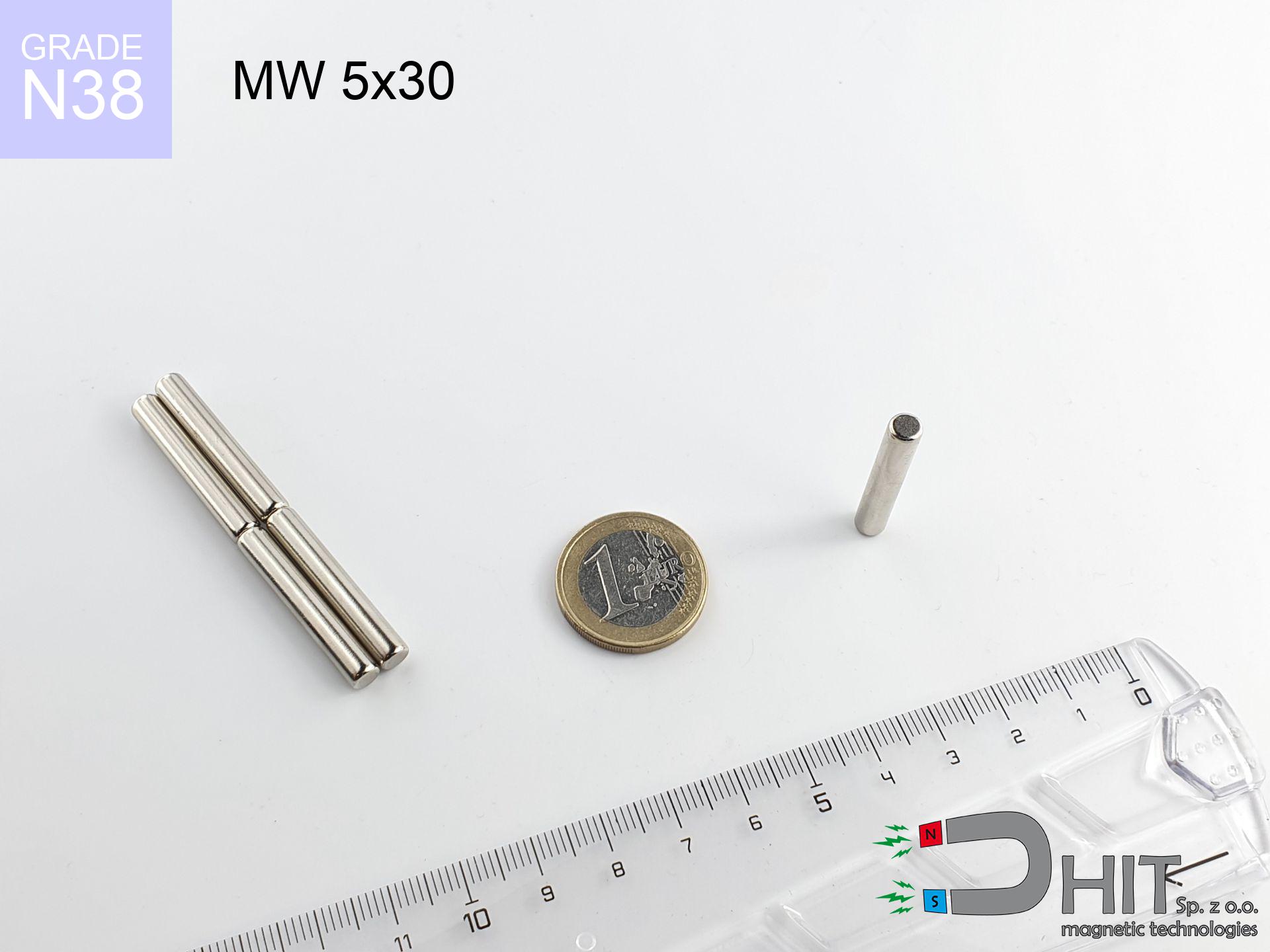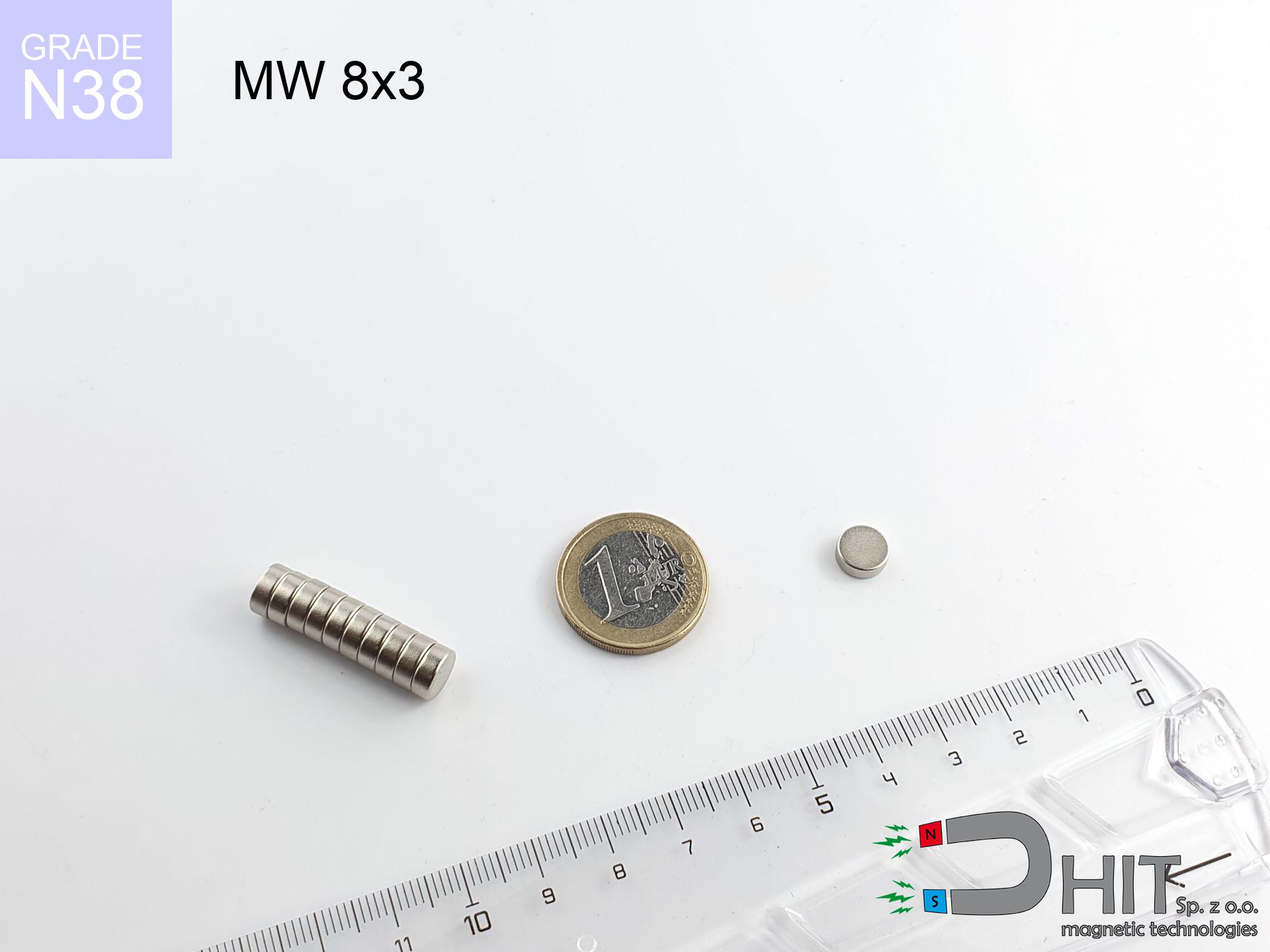SM 32x275 [2xM8] / N42 - magnetic separator
magnetic separator
Catalog no 130376
GTIN/EAN: 5906301813248
Diameter Ø
32 mm [±1 mm]
Height
275 mm [±1 mm]
Weight
1475 g
Magnetic Flux
~ 8 000 Gauss [±5%]
824.10 ZŁ with VAT / pcs + price for transport
670.00 ZŁ net + 23% VAT / pcs
bulk discounts:
Need more?
Give us a call
+48 22 499 98 98
or let us know by means of
inquiry form
the contact page.
Weight as well as structure of magnetic components can be checked using our
online calculation tool.
Order by 14:00 and we’ll ship today!
Technical - SM 32x275 [2xM8] / N42 - magnetic separator
Specification / characteristics - SM 32x275 [2xM8] / N42 - magnetic separator
| properties | values |
|---|---|
| Cat. no. | 130376 |
| GTIN/EAN | 5906301813248 |
| Production/Distribution | Dhit sp. z o.o. |
| Country of origin | Poland / China / Germany |
| Customs code | 85059029 |
| Diameter Ø | 32 mm [±1 mm] |
| Height | 275 mm [±1 mm] |
| Weight | 1475 g |
| Material Type | Stainless steel AISI 304 / A2 |
| Magnetic Flux | ~ 8 000 Gauss [±5%] |
| Size/Mount Quantity | 2xM8 |
| Polarity | circumferential - 10 poles |
| Casing Tube Thickness | 1 mm |
| Manufacturing Tolerance | ±1 mm |
Magnetic properties of material N42
| properties | values | units |
|---|---|---|
| remenance Br [min. - max.] ? | 12.9-13.2 | kGs |
| remenance Br [min. - max.] ? | 1290-1320 | mT |
| coercivity bHc ? | 10.8-12.0 | kOe |
| coercivity bHc ? | 860-955 | kA/m |
| actual internal force iHc | ≥ 12 | kOe |
| actual internal force iHc | ≥ 955 | kA/m |
| energy density [min. - max.] ? | 40-42 | BH max MGOe |
| energy density [min. - max.] ? | 318-334 | BH max KJ/m |
| max. temperature ? | ≤ 80 | °C |
Physical properties of sintered neodymium magnets Nd2Fe14B at 20°C
| properties | values | units |
|---|---|---|
| Vickers hardness | ≥550 | Hv |
| Density | ≥7.4 | g/cm3 |
| Curie Temperature TC | 312 - 380 | °C |
| Curie Temperature TF | 593 - 716 | °F |
| Specific resistance | 150 | μΩ⋅cm |
| Bending strength | 250 | MPa |
| Compressive strength | 1000~1100 | MPa |
| Thermal expansion parallel (∥) to orientation (M) | (3-4) x 10-6 | °C-1 |
| Thermal expansion perpendicular (⊥) to orientation (M) | -(1-3) x 10-6 | °C-1 |
| Young's modulus | 1.7 x 104 | kg/mm² |
Table 1: Rod construction
SM 32x275 [2xM8] / N42
| Parameter | Value | Description / Unit |
|---|---|---|
| Diameter (Ø) | 32 | mm |
| Total length | 275 | mm (L) |
| Active length | 239 | mm |
| Section count | 10 | modules |
| Dead zone | 36 | mm (2x 18mm starter) |
| Weight (est.) | ~1681 | g |
| Active area | 240 | cm² (Area) |
| Housing material | AISI 304 | 1.4301 (Inox) |
| Surface finish | Ra < 0.8 µm | Polished |
| Temp. class | 80°C | Standard (N) |
| Force loss (at max °C) | -12.8% | Reversible loss (physics) |
| Force (calculated) | 17.3 | kg (theor.) |
| Induction (surface) | ~6 500 | Gauss (Max) |
Chart 2: Field profile (10 sections)
Chart 3: Temperature performance
Material specification
| iron (Fe) | 64% – 68% |
| neodymium (Nd) | 29% – 32% |
| boron (B) | 1.1% – 1.2% |
| dysprosium (Dy) | 0.5% – 2.0% |
| coating (Ni-Cu-Ni) | < 0.05% |
Ecology and recycling (GPSR)
| recyclability (EoL) | 100% |
| recycled raw materials | ~10% (pre-cons) |
| carbon footprint | low / zredukowany |
| waste code (EWC) | 16 02 16 |
Check out also offers
Strengths as well as weaknesses of neodymium magnets.
Advantages
- They do not lose strength, even after nearly 10 years – the decrease in power is only ~1% (according to tests),
- Neodymium magnets are characterized by remarkably resistant to magnetic field loss caused by external interference,
- By using a lustrous coating of gold, the element presents an professional look,
- Magnets possess excellent magnetic induction on the active area,
- Neodymium magnets are characterized by extremely high magnetic induction on the magnet surface and can function (depending on the shape) even at a temperature of 230°C or more...
- Due to the potential of free shaping and adaptation to unique projects, magnetic components can be manufactured in a variety of forms and dimensions, which makes them more universal,
- Versatile presence in electronics industry – they serve a role in magnetic memories, electric drive systems, advanced medical instruments, also multitasking production systems.
- Relatively small size with high pulling force – neodymium magnets offer high power in tiny dimensions, which allows their use in compact constructions
Limitations
- They are prone to damage upon heavy impacts. To avoid cracks, it is worth protecting magnets in special housings. Such protection not only shields the magnet but also improves its resistance to damage
- Neodymium magnets lose their force under the influence of heating. As soon as 80°C is exceeded, many of them start losing their force. Therefore, we recommend our special magnets marked [AH], which maintain durability even at temperatures up to 230°C
- When exposed to humidity, magnets start to rust. For applications outside, it is recommended to use protective magnets, such as those in rubber or plastics, which prevent oxidation as well as corrosion.
- Due to limitations in realizing nuts and complex shapes in magnets, we recommend using a housing - magnetic mount.
- Potential hazard resulting from small fragments of magnets can be dangerous, if swallowed, which becomes key in the aspect of protecting the youngest. It is also worth noting that small components of these magnets are able to complicate diagnosis medical after entering the body.
- With budget limitations the cost of neodymium magnets is a challenge,
Holding force characteristics
Detachment force of the magnet in optimal conditions – what affects it?
- with the application of a sheet made of special test steel, ensuring maximum field concentration
- possessing a massiveness of minimum 10 mm to ensure full flux closure
- with a plane free of scratches
- under conditions of gap-free contact (surface-to-surface)
- for force applied at a right angle (in the magnet axis)
- at temperature approx. 20 degrees Celsius
Practical lifting capacity: influencing factors
- Gap between magnet and steel – every millimeter of distance (caused e.g. by varnish or unevenness) drastically reduces the pulling force, often by half at just 0.5 mm.
- Force direction – catalog parameter refers to detachment vertically. When attempting to slide, the magnet holds significantly lower power (typically approx. 20-30% of nominal force).
- Steel thickness – too thin plate does not accept the full field, causing part of the flux to be lost to the other side.
- Chemical composition of the base – low-carbon steel attracts best. Higher carbon content lower magnetic properties and lifting capacity.
- Surface quality – the smoother and more polished the surface, the larger the contact zone and stronger the hold. Unevenness creates an air distance.
- Temperature influence – high temperature weakens magnetic field. Too high temperature can permanently damage the magnet.
Holding force was measured on a smooth steel plate of 20 mm thickness, when a perpendicular force was applied, in contrast under shearing force the lifting capacity is smaller. In addition, even a minimal clearance between the magnet’s surface and the plate lowers the load capacity.
Safe handling of NdFeB magnets
Threat to navigation
Navigation devices and smartphones are extremely susceptible to magnetism. Close proximity with a powerful NdFeB magnet can decalibrate the internal compass in your phone.
Maximum temperature
Keep cool. Neodymium magnets are susceptible to temperature. If you need resistance above 80°C, look for special high-temperature series (H, SH, UH).
Allergic reactions
Medical facts indicate that nickel (standard magnet coating) is a potent allergen. For allergy sufferers, avoid direct skin contact and select versions in plastic housing.
Serious injuries
Risk of injury: The pulling power is so great that it can cause hematomas, pinching, and even bone fractures. Use thick gloves.
Implant safety
Warning for patients: Strong magnetic fields disrupt medical devices. Keep minimum 30 cm distance or ask another person to work with the magnets.
Fragile material
Beware of splinters. Magnets can fracture upon violent connection, launching shards into the air. Eye protection is mandatory.
This is not a toy
Product intended for adults. Small elements pose a choking risk, causing severe trauma. Keep away from kids and pets.
Fire risk
Machining of NdFeB material poses a fire hazard. Neodymium dust reacts violently with oxygen and is difficult to extinguish.
Conscious usage
Before starting, check safety instructions. Uncontrolled attraction can destroy the magnet or hurt your hand. Be predictive.
Safe distance
Very strong magnetic fields can destroy records on credit cards, HDDs, and other magnetic media. Stay away of min. 10 cm.

![Magnetic bar SM 32x275 [2xM8] / N42 Magnetic bar SM 32x275 [2xM8] / N42](https://cdn3.dhit.pl/graphics/banners/magnet.webp)
![SM 32x275 [2xM8] / N42 - magnetic separator](https://cdn3.dhit.pl/graphics/products/sm-32x275-2xm8-hac.jpg)



![SM 25x300 [2xM8] / N52 - magnetic separator SM 25x300 [2xM8] / N52 - magnetic separator](https://cdn3.dhit.pl/graphics/products/sm-25x300-2xm8-dij.jpg)

